Hebrew: בן-חצב יקינתוני, Arabic: إشقيل خزامي
| Scientific name: | Scilla hyacinthoides L. | |
| Common name: | Hyacinth Squill | |
| Hebrew name: | בן-חצב יקינתוני | |
| Arabic name: | إشقيل خزامي | |
| Family: | Liliaceae, שושניים |
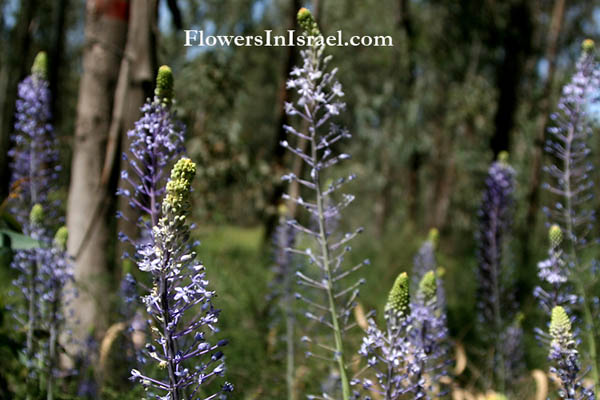
|
| Life form: | Geophyte | |
| Leaves: | Rosette, entire | |
| Flowers: | Dark blue | |
| Flowering Period: | February, March, April | |
| Habitat: | Batha, Phrygana | |
| Distribution: | Mediterranean Woodlands and Shrublands, Semi-steppe shrublands, Montane vegetation of Mt. Hermon | |
| Chorotype: | Mediterranean | |
| Summer shedding: | Ephemeral |
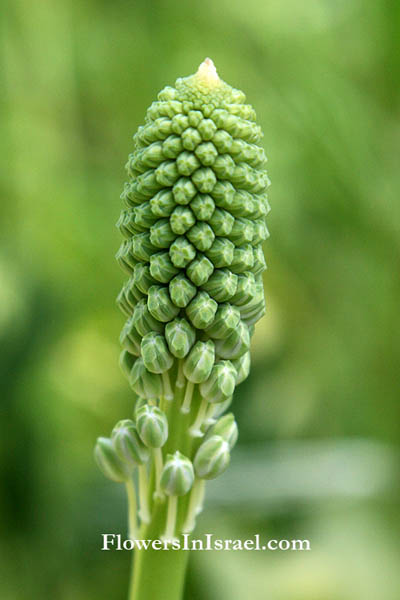
Derivation of the botanical name: Scilla, squill is an anglicized form of Latin scilla (late Latin squilla), and cognate to other modern European names derived ultimately from Greek oKdX~a (skilla) or OKLXAv, (skille), used by Hippocrates; from the Greek for injure, disturb, excite since of its harmful effects on the stomach and other body parts. hyacinthoides, hyacinthus, Greek name for hyacinth; oides, "like" or "similar to"; resembling a hyacinth; In Greek mythology, Hyacinth was a beautiful youth beloved by the god Apollo. The two took turns throwing the discus, until Apollo, to impress his beloved, threw it with all his might. Hyacinth ran to catch it, to impress Apollo in turn, and was struck by the discus as it fell to the ground and he died. Apollo made a flower, the hyacinth, from Hyacinth's spilled blood. The Hebrew name of the genus בן-חצב, ben-hatsov, was given because of the morphological similarities between Scilla and Urginea, for its bulblets and similar flowers, to a hatsov.
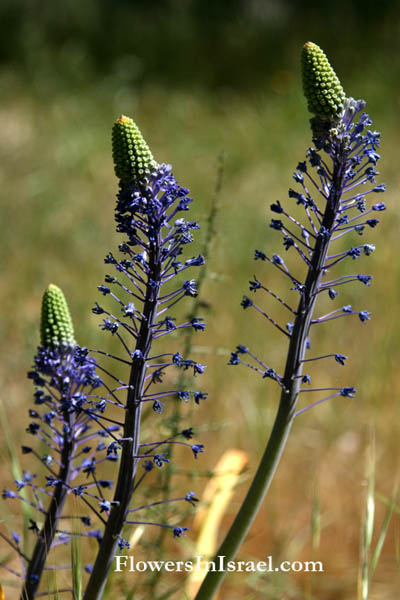
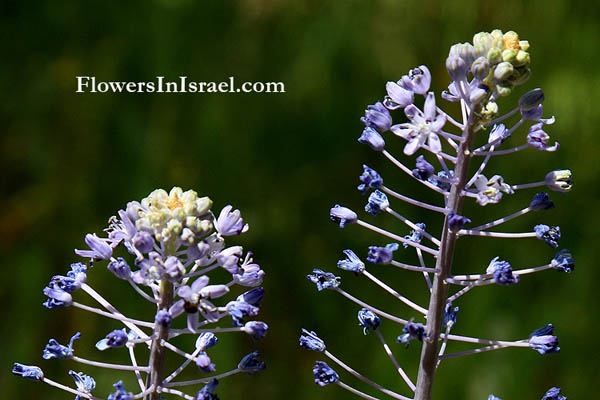
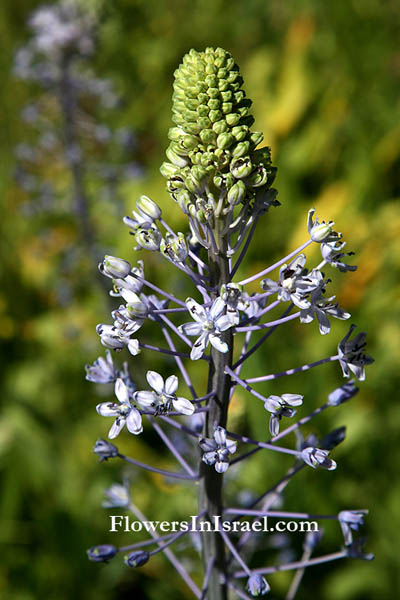
|